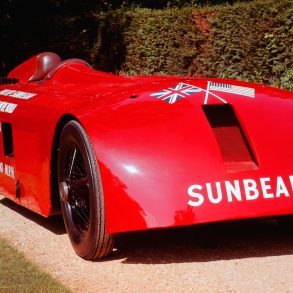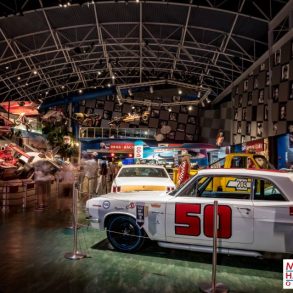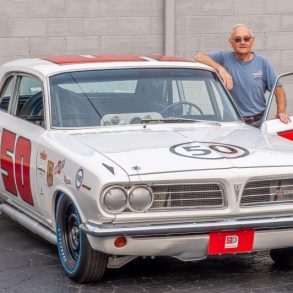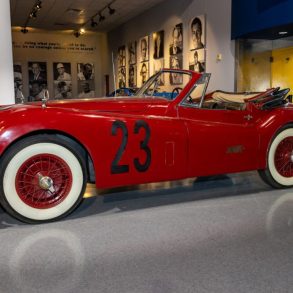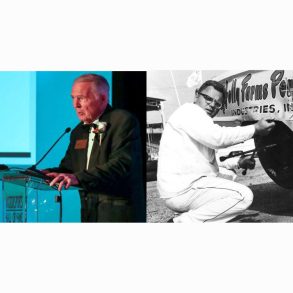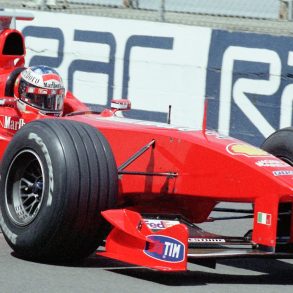Bob Osiecki’s winged wonder Mad Dog IV, which shattered the international closed-course speed record at Daytona International Speedway in 1961, now calls the Motorsports Hall of Fame of America home.
The unusual looking machine was designed (with a little help from Georgia Tech) and built by Bob Osiecki, who hired drag racer Art Malone to wheel it to a record lap of 181.561 mph.
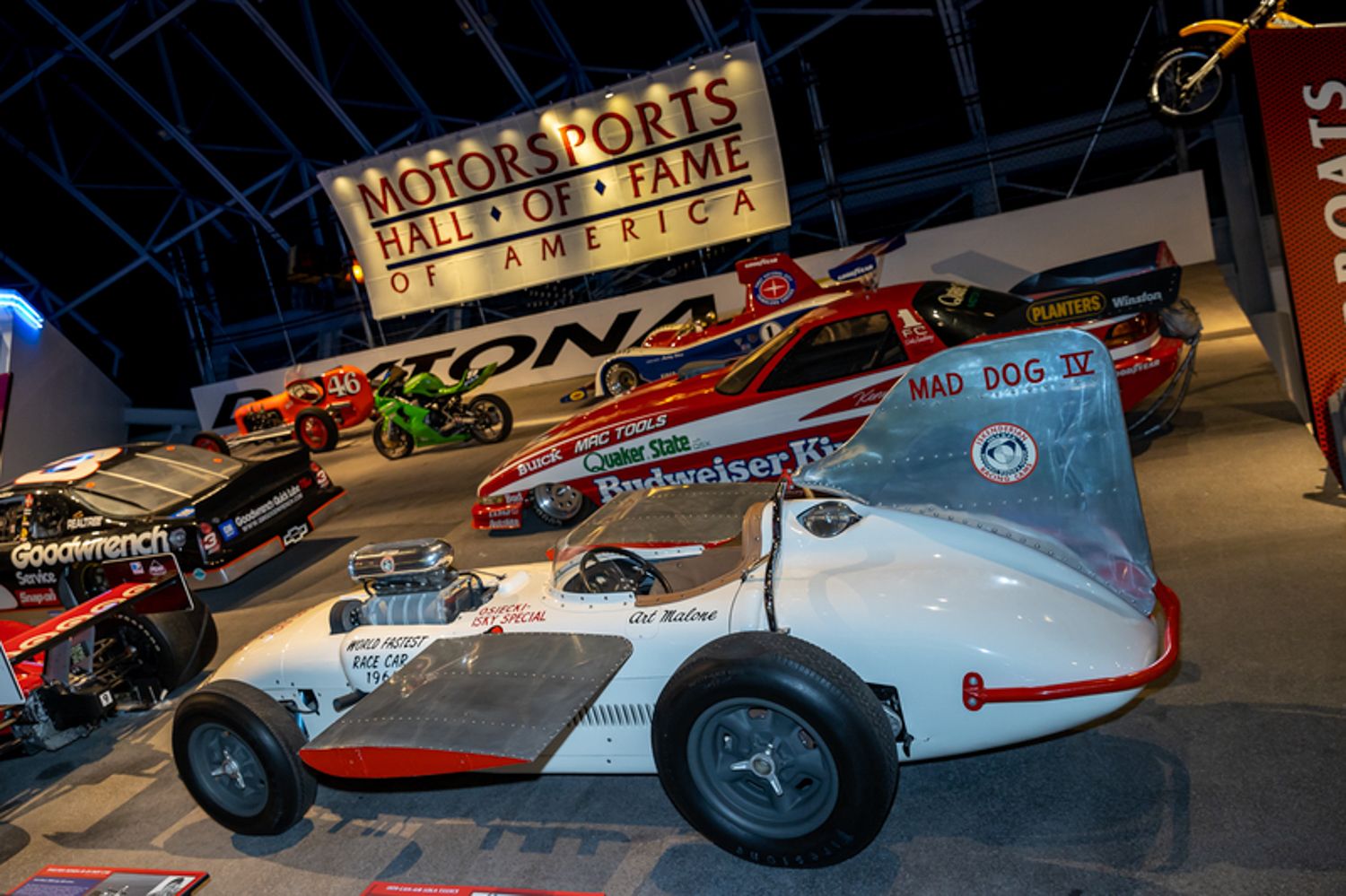
The current car owner, legendary drag racer Don Garlits (MSHFA Class of 1989), has put the airplane-like speed machine on display at the award-winning museum, which is only a few hundred feet from where it made its history-making run. Garlits pulled the car from his collection at the Don Garlits Museum of Drag Racing in Ocala.
“I honestly think that’s where the car should be, over there at the round-track museum and the car made that speed at Daytona,” the 90-year-old Garlits said. “To me, that’s the perfect place for Mad Dog IV.”
Mad Dog IV was placed with other notable vehicles on the racetrack exhibit, which replicates Daytona’s high-banked turns. It is truly a place of honor for Daytona-specific motorsports machines.
“We’re so grateful to ‘Big Daddy,’ our very first inductee in the Drag Racing category back in 1989, for lending us this important vehicle and one that we know is close to his heart,” said MSHFA President George Levy. “He and Malone were great friends and on-track rivals.”
The story of Mad Dog IV’s creation is one for the ages. It was purpose-built for only one job – bring the closed-course international speed record to Daytona.
Bill France Sr. (MSHFA Class of 1990), who orchestrated NASCAR’s founding then built Daytona International Speedway, was a sports visionary with a flair for promotion.
When the fastest, closed-track speed record was established at Autodromo Nazionale di Monza (Italy) in 1957 at 177.38 mph, France wanted to get those bragging rights and put up a $10,000 prize for anyone who could top the 180 mph mark at his 2.5-mile, high-banked track, which opened in 1959.
Many tried and failed, including Osiecki, who made three attempts with various cars before seeking engineering advice from John J. Harper, who was an aerospace professor at Georgia Tech.
The Kurtis Kraft roadster with a Chrysler V8 engine was one of three used by Firestone as a test car for its tires in 1957. Osiecki bought the car from the tiremaker, figuring it had the power needed to chase France’s money.
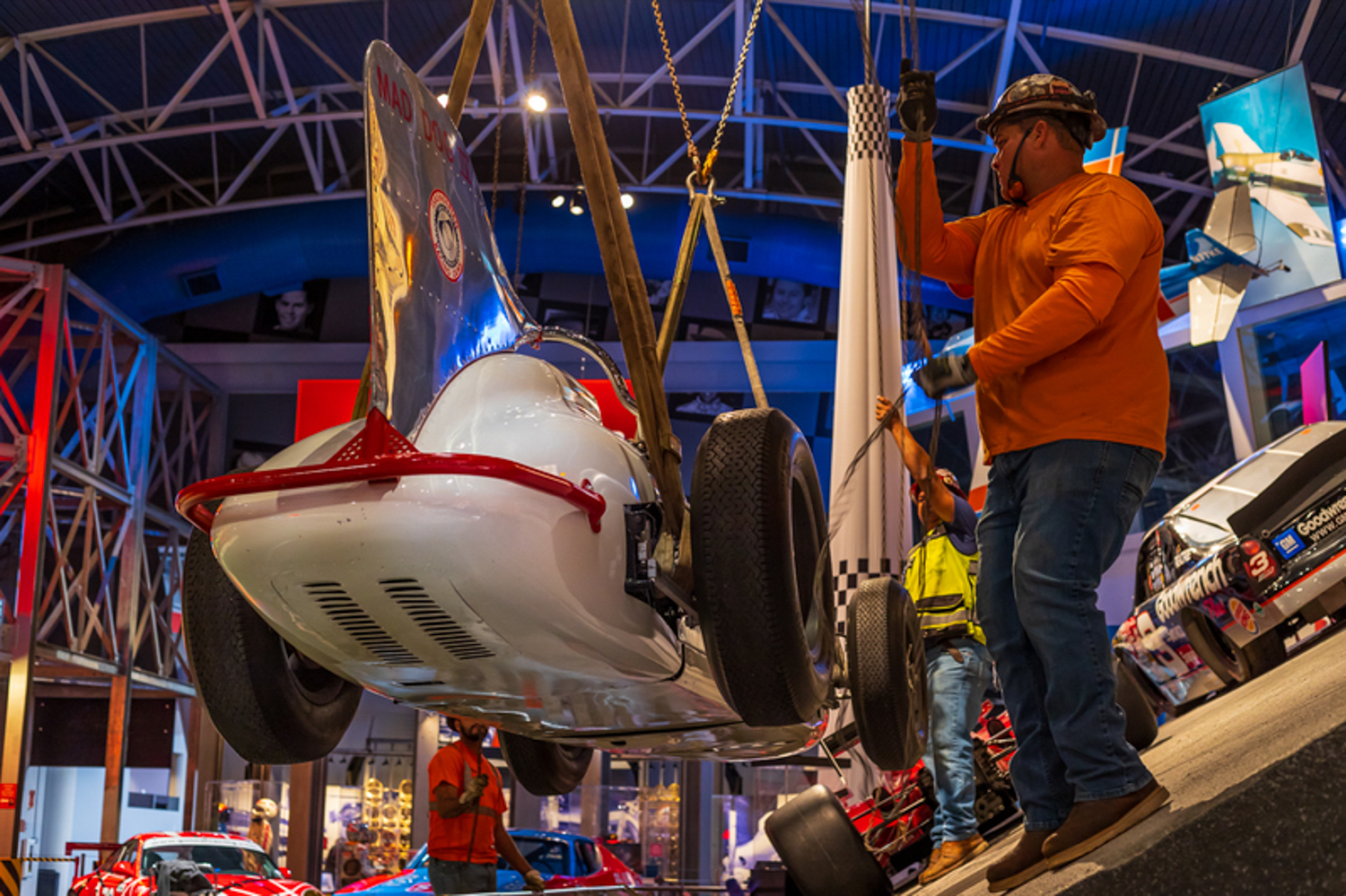
Tom Osiecki, who is Bob Osiecki’s youngest son, said his father sought technical advice from the Georgia Tech aerospace department.
“My dad attended Georgia Tech for a while and knew people there,” Tom Osiecki said. “He did a mockup of the car and took it to the school’s wind tunnel. He thought they could invert some wings to put downforce on it and they came up with the right angles, and how big the wings needed to be, and built a stabilizer so the back of the car wouldn’t go crazy. It was a real challenge.”
According to a story on Georgia Tech’s website (gatech.edu), Osiecki sought Harper’s expertise with airplanes to stabilize the car at speed.
“When Osiecki decided to take on France’s challenge, he knew he needed to make adjustments to his car to counter the centrifugal force from the track’s high-banked curves, which tore away tire rubber at high speeds and made steering almost impossible,” the article says.
“Osiecki shipped the Mad Dog IV from Charlotte, North Carolina to the (Georgia Tech) Guggenheim Building, where Harper also oversaw the daily operations of the 9-foot diameter wind tunnel located on the ground floor. The professor and his students designed and tested a pair of inverted airfoils — wings, in effect — each one measuring 3 square feet. Harper also created a vertical stationary tail fin, similar to an airplane rudder, for increased stability.”
After Osiecki had the right package – a car with wings and a tailfin – he needed a fearless driver at the wheel and hired 25-year-old Malone, known as a drag racer. They made the record run over the 31-degree banked turns on August 28, 1961. He spun once in a practice run and flat-spotted the left rear tire, which remains on the car to this day.
According to the Georgia Tech article, “On that balmy August afternoon in Daytona . . . the Mad Dog IV’s “wings and tail held the car steady though the tortuous turns and down the breathless straightaways,” setting a new standard for speed. It was “obvious that the soft-spoken Harper is pleased at having helped wed science and racing to give the fans more thrills.”
Tom Osiecki said his father spent somewhere in the neighborhood of $35,000 to put Mad Dog IV together. “And dad only got half the ($10,000) prize money,” he added. “He gave half the winnings to Art for driving the car.”
Tom Osiecki said his father promoted car shows around the country and figured he could recoup his investment by showcasing “The Fastest Race Car in the World.”
“Art and I were buddies,” Garlits said. “We went to school together from the fifth grade. Him and I were inseparable. When he set that record over there, well, I was into wings. I was the one that brought wings into drag racing. It was a really great car. Art told me before he died that Bob’s son had it and might sell it, so I bought it and I’m sure glad I did because it’s a piece of history. We got it and it ain’t gonna go anyplace. I think sending it over to Daytona is the right thing to do. Let the fans of racing see it.”
“Mad Dog IV is the epitome of American innovation,” Levy said. “Bill France wanted to claim Daytona International Speedway was the world’s fastest racetrack. When it was clear an existing race car wasn’t going to cut it, Osiecki and Harper came up with the idea of inverted wings for downforce. They broke the record and helped launch the Downforce Era.”





